It can be a challenge to tell if a snake you have found in the wild is dangerous or not. Venomous snakes are snakes that can harm you if you are bitten.
This can vary from pain and bleeding to serious harm like necrosis, paralysis, and death.
Most snakes in the United States can’t cause serious harm, but you still need medical care if you are bitten by one. This list will teach you how to tell apart venomous snakes in the United States.
This does not apply to other countries. If you are located elsewhere, you need to learn what snakes are native to the area you are in.
One thing to note is that many nonvenomous snakes will mimic venomous snakes to try to avoid predators.
Always learn what snakes live in your area to help you recognize venomous snakes and identify native snakes more easily.
1. Head Shape
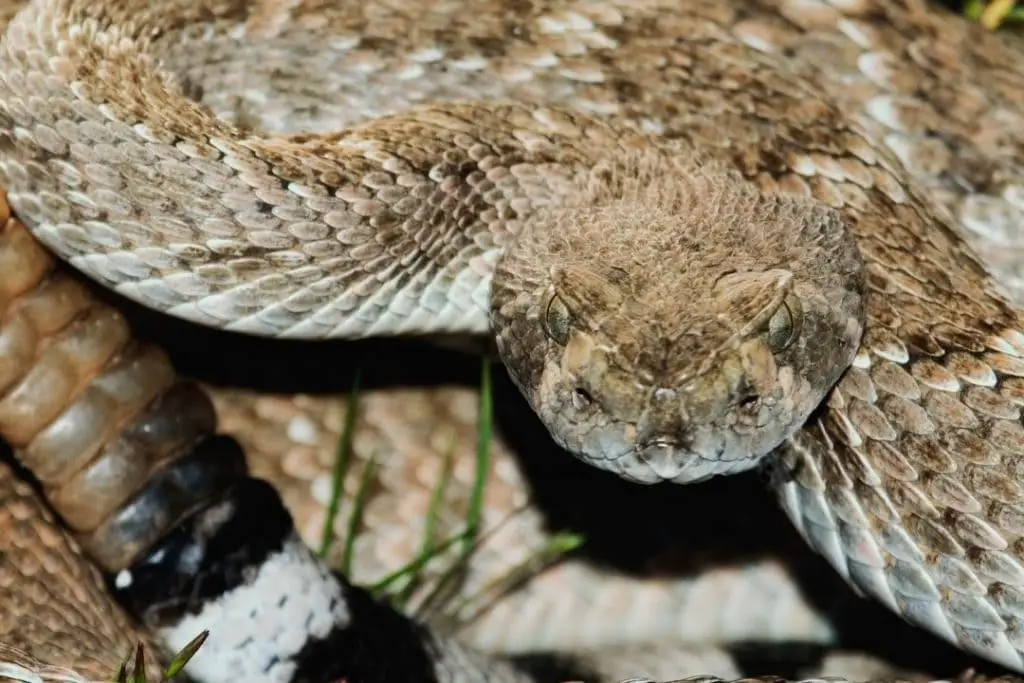
The majority of venomous snakes in the United States are members of the family Viperidae (vipers).
The main exceptions are the coral snakes from the family Elapidae.
Vipers like rattlesnakes, cottonmouths, and copperheads all have a thick and blocky head that is shaped like a wedge.
The neck is much smaller and very distinct from the head on vipers.
Most of the venomous snakes in the United States are also pit vipers, which means they have a facial pit above the mouth that allows them to sense heat.
This lets them easily target their warm-blooded prey like mammals and birds. Coral snakes have much smaller heads that mostly blend into their necks.
They have blunt snouts and short heads that can help tell them apart from their harmless non venomous snakes mimics. There are three species of coral snake in the United States and they each look different.
They tend to have a shorter snout than their mimics and may have a black snout while mimics may have a different head color.
2. Pupils
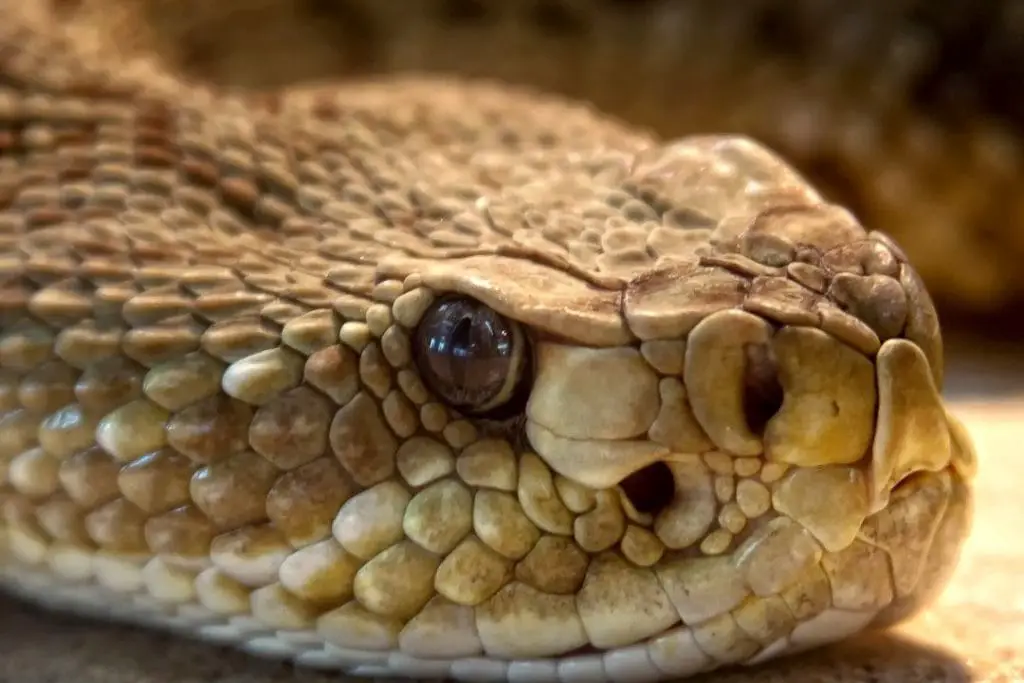
The vipers such as rattlesnakes are incredibly easy to tell apart from their nonvenomous mimics.
Vipers have elliptical pupils like a cat.
Most mimics such as kingsnakes, gopher snakes, and pine snakes all have round pupils. If you can see the snake’s eyes it makes identification very easy.
Note that not all snakes with elliptical pupils are venomous, particularly in other parts of the world. Pythons have elliptical pupils and they are nonvenomous constrictors.
Coral snakes also have round pupils, which is the same as their common mimics such as the scarlet kingsnake.
3. Body
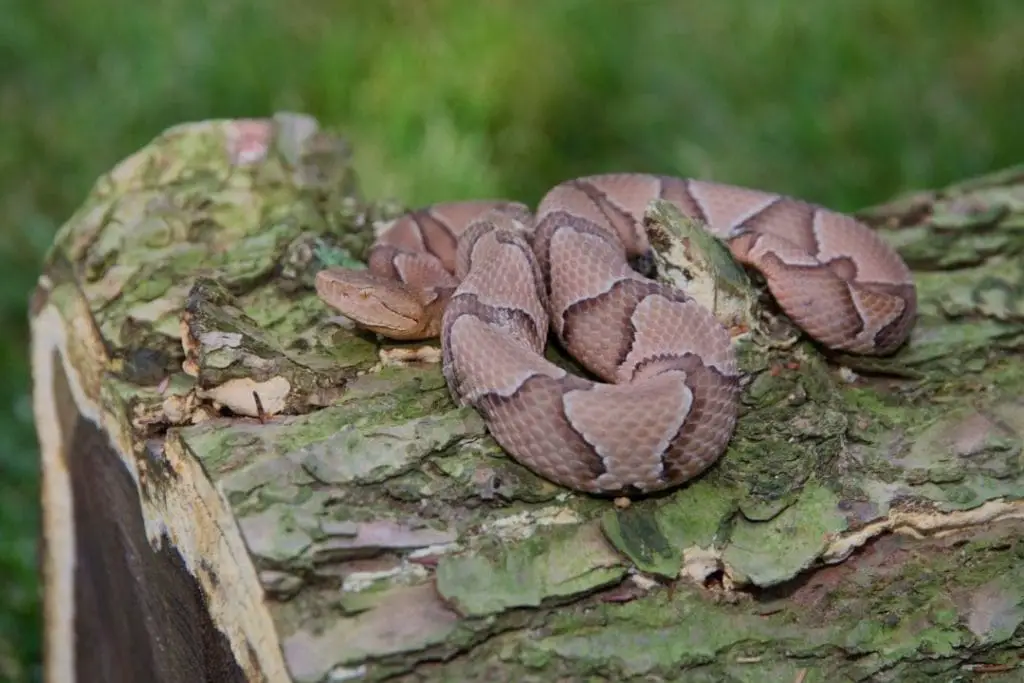
One of the biggest differences with the vipers compared to their mimics is the body shape.
Vipers are very thick in general as adults. Younger snakes can seem slim, but they tend to grow up quickly.
The middle is very thick compared to the neck and tail.
Coral snakes are very slim like their mimics. The rattlesnakes can be under 3 feet to over 5 for the larger species.
Coral snakes are smaller and tend to be under 2 feet for most animals.
The eastern coral (Micrurus fulvious) is the largest species in the United States and can reach sizes of up to 51 inches.
Most animals will be around 31 inches. The nonvenomous snakes are frequently larger, but this isn’t always the case.
The scarlet kingsnake (Lampropeltis elapsoides) shares range with the eastern coral snake but rarely reaches over 24 inches long as adults.
4. Color and Scales
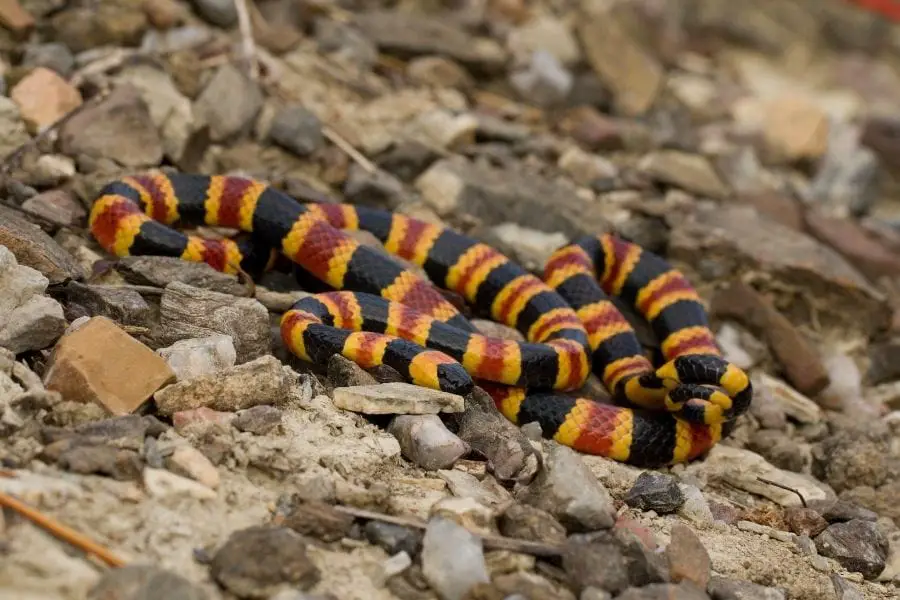
Color can be a good way to tell. Most of the venomous snakes have very distinct colors and patterns in the wild.
However, some animals may lack colors or patterns since they may lack a specific pigment.
Albino animals and animals lacking red or yellow pigments have been recorded for most of the venomous snakes.
Most of the vipers have colors and patterns that allow them to blend into their environment.
Sidewinders and timber rattlesnakes can be very hard to spot in the wild due to cryptic colors and patterns.
Even the vibrant copperhead can be hard to spot against the leaf litter. Most have patterns that can help.
The diamondback rattlesnakes have diamond patterns. Copperheads have distinctive markings on the sides that tell them apart from other snakes in the area.
Coral snakes tend to be the most solid colored snakes with bright bands of yellow, black, and red. The red tends to touch yellow, but some animals may lack yellow or red pigments.
Snakes with unusually pale colors have also been recorded. Most will have a black head with a yellow band, but this can disappear in some animals.
The red touching yellow can help tell apart the coral snakes from their mimics, but this is not true for coral snakes outside of the United States.
The pit vipers all share a keeled scale that gives them a rough look. Many species also have unique scales that are easy to tell apart.
Vipers tend to have distinctly pointed scales that most other families of snakes lack. Coral snakes do have shiny scales like their mimics.
5. Behavior
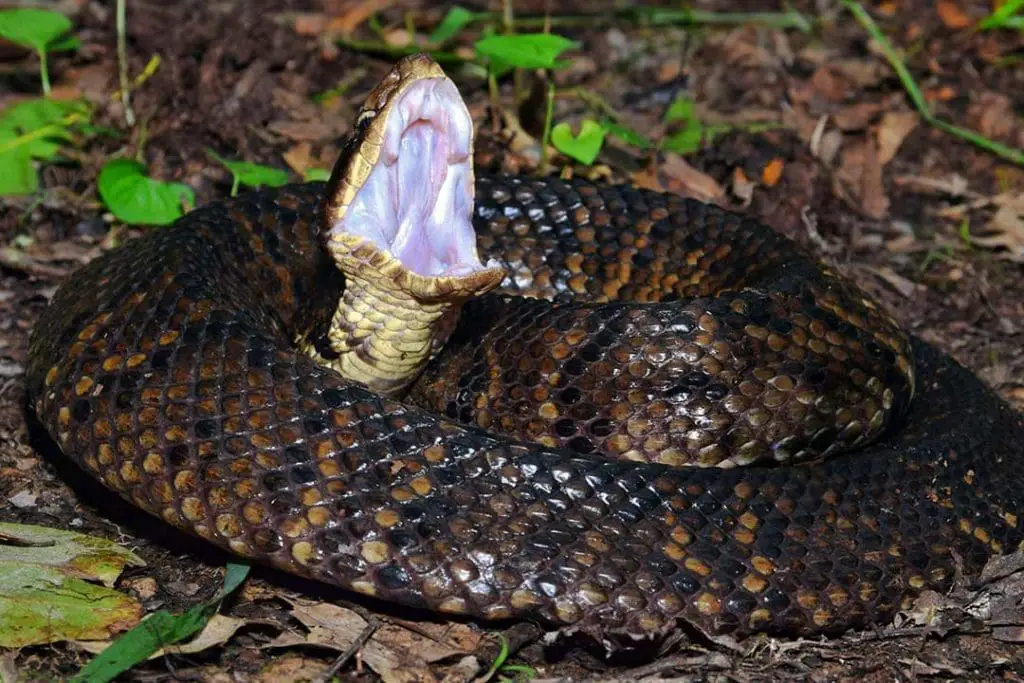
One of the best ways to tell venomous snakes apart in the United States is just how reluctant they are to bite.
They will go through a number of stages to scare you off like posturing, hissing, displaying their fangs, rattling their tail, or lifting it up in the case of coral snakes.
The only time a venomous snake will bite without warning is if you step on them or try to kill them. They will try to scare you off before they bite.
Most nonvenomous snakes are much more likely to bite you. The one exception is the hognoses since these harmless snakes normally prefer to perform a strike with the mouth closed to drive off threats.
Snake bites from non venomous snakes are more common.
The vipers are also very slow animals. They cannot move very fast and some like cottonmouths can seem very awkward if they try to flee on land.
Coral snakes are a bit faster, but they are rarely seen above ground. All of the venomous snakes are known for staying on the ground.
If you see a snake climbing a tree, it is very likely not venomous. The only venomous snakes (and not poisonous snakes) seen swimming are the cottonmouth species.
There are numerous other water snakes found in the United States and most are harmless.
Other Areas
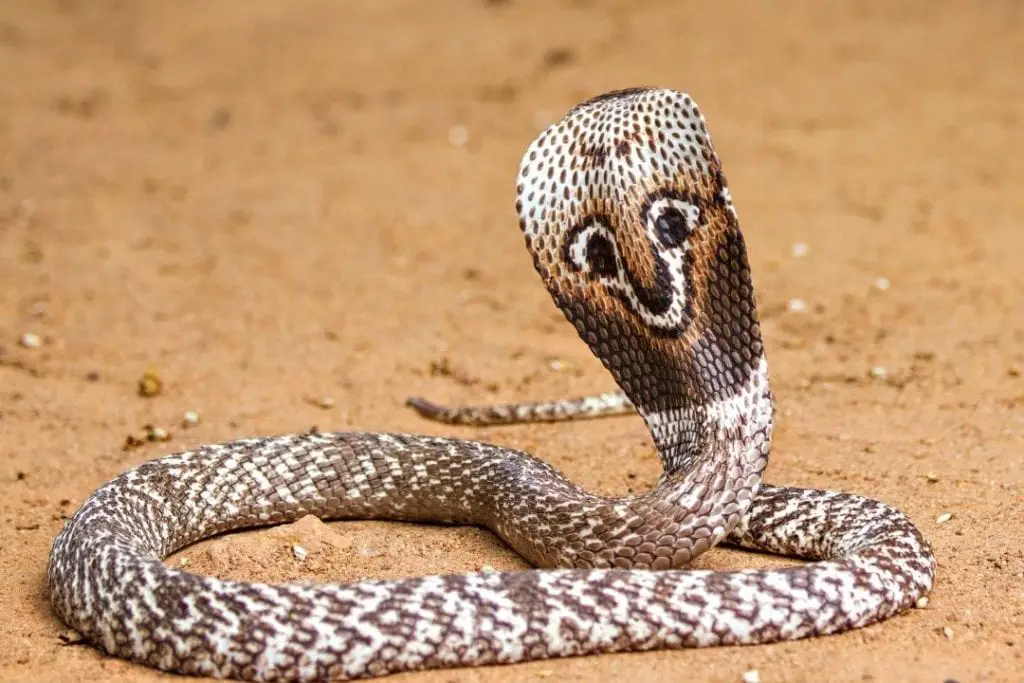
It bears repeating that this doesn’t hold true in other regions. For instance, the king cobra has a head that blends into its neck if its hood is down.
Pythons like carpet pythons from Australia have elliptical pupils. Coral snakes found in South America do not follow the color rule to identify venomous snakes.
The best thing to do if you run into a wild snake is to let it leave. If a wild snake has gotten into a building it shouldn’t be in like your home, always call a professional removal specialist to move the snake.
Never try to kill a snake since this is when you will be bitten. The snake will defend itself and you will get a full load of venom.
This means a trip to the hospital for antivenin if it is available. Some deadly most venomous snakes like variable pit vipers do not have an antivenin available.
This means that they are more likely to cause death or serious harm.
We hope this has helped you learn how to tell apart venomous snakes.
Sadly, there are no traits that hold true worldwide.
If you will be heading into the wilderness, it is always worth the time to learn about the native animals so you can stay safe and know how to tell if a snake is venomous and recognize common venomous snake species.
If you have any questions, comments, or tips for identifying snakes, please let us know in the comments below.
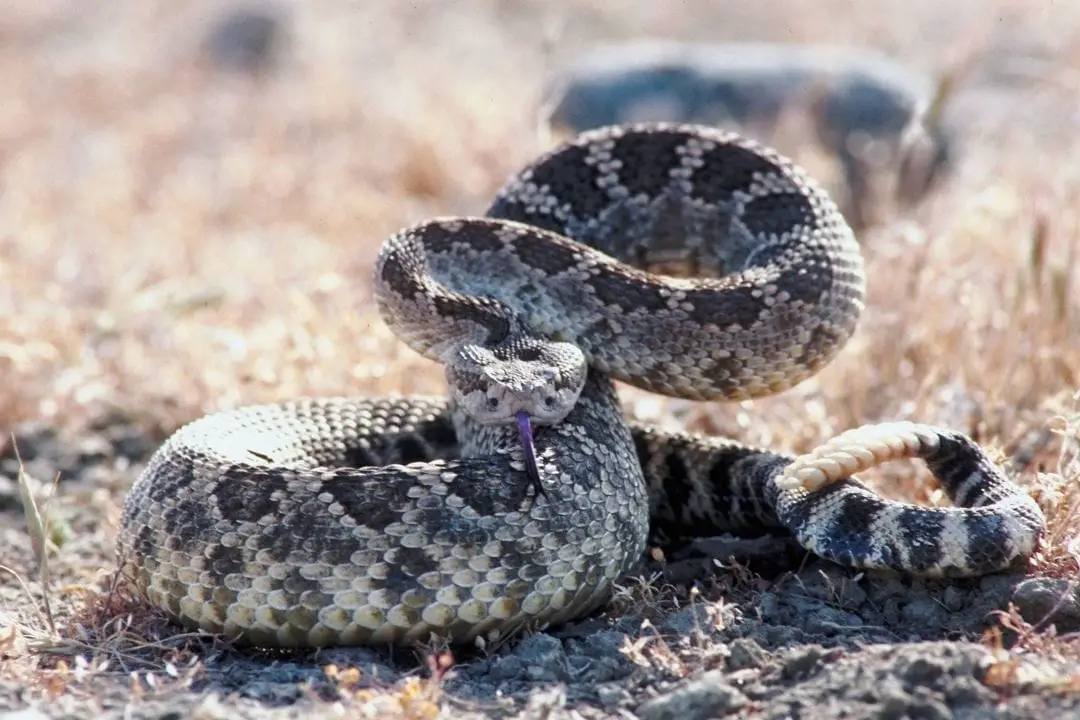
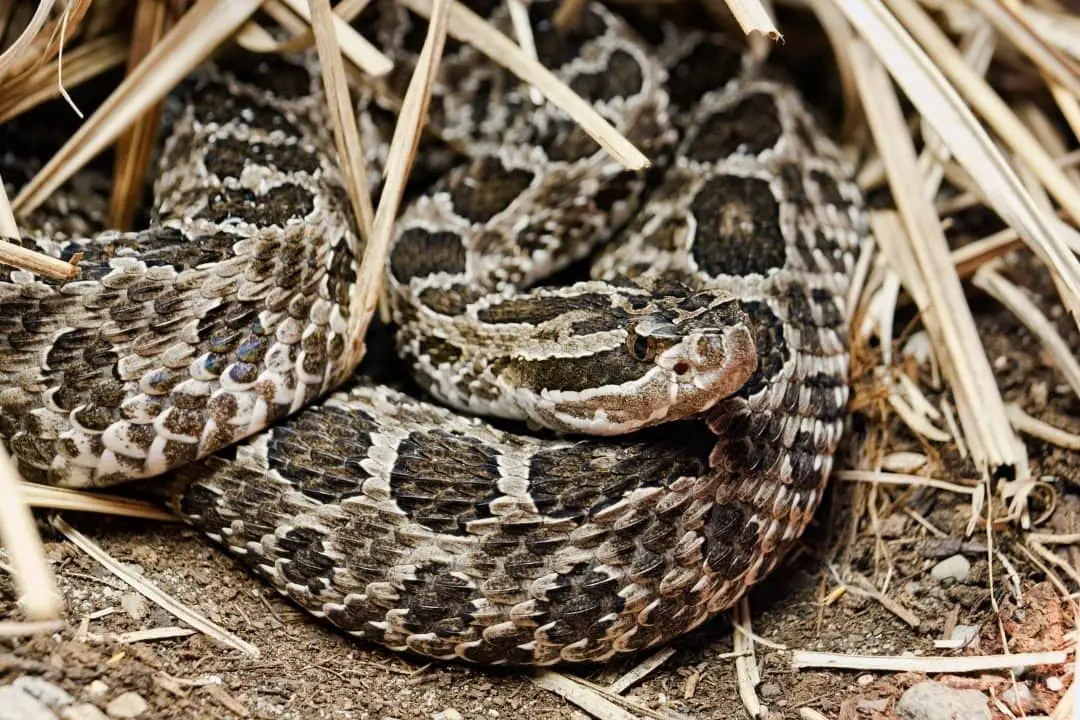
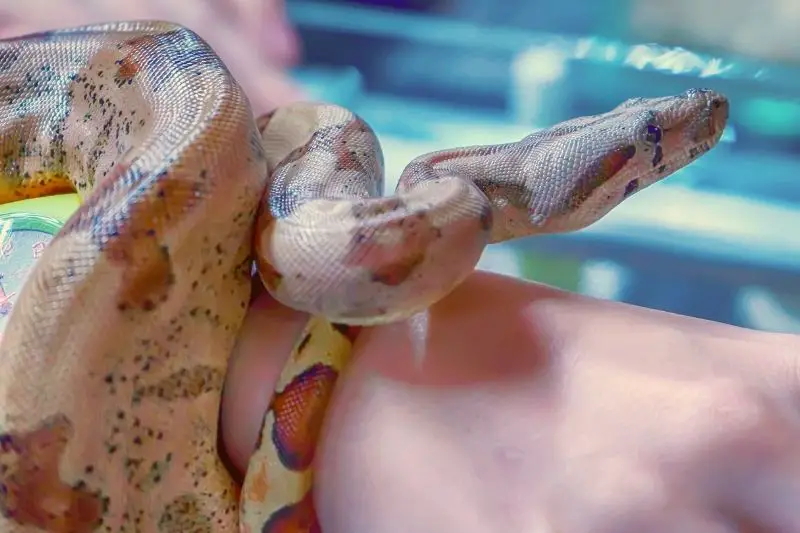
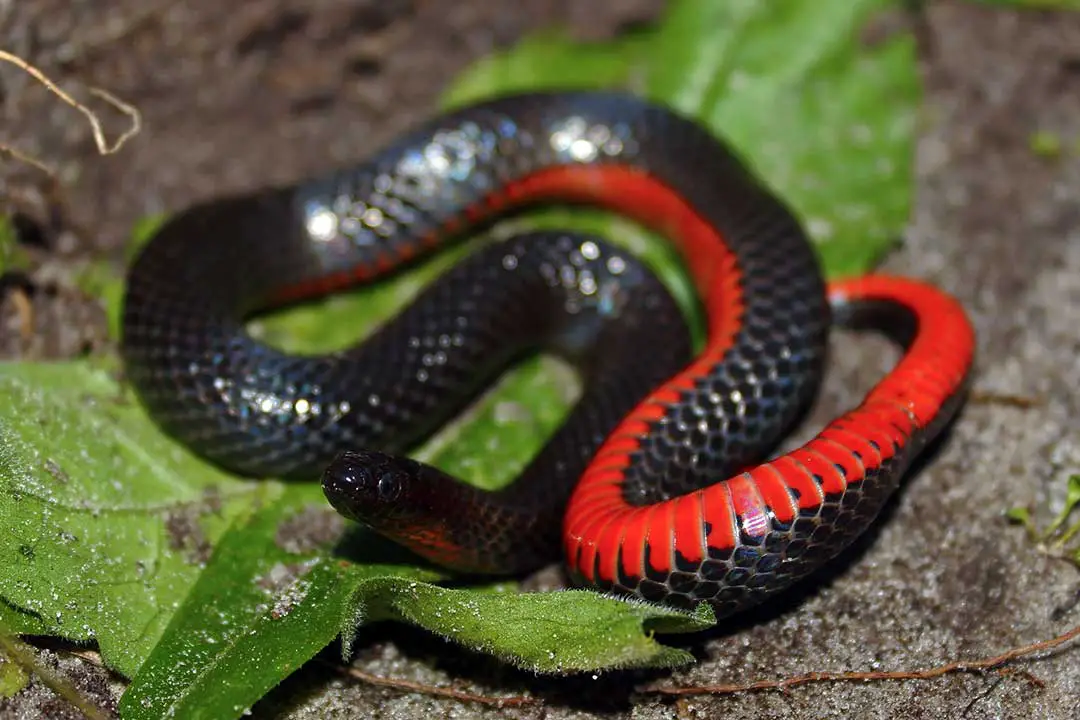

Do Rat or King snakes live in the ground (underground)? Do they have tunnels that leave round hole openings on the surface? I have seen a large Black snake in my flower garden & on a trellis. I’ve been trying to deter moles/ voles from eating my plant roots & killing my plants/flowers and thought they were digging tunnels & leaving open or back filled holes on the surface, but now I’m wondering if the snake is also doing this. I was going to poison them as a last resort, but don’t want to kill the snake, especially if the snake will do the killing for me!